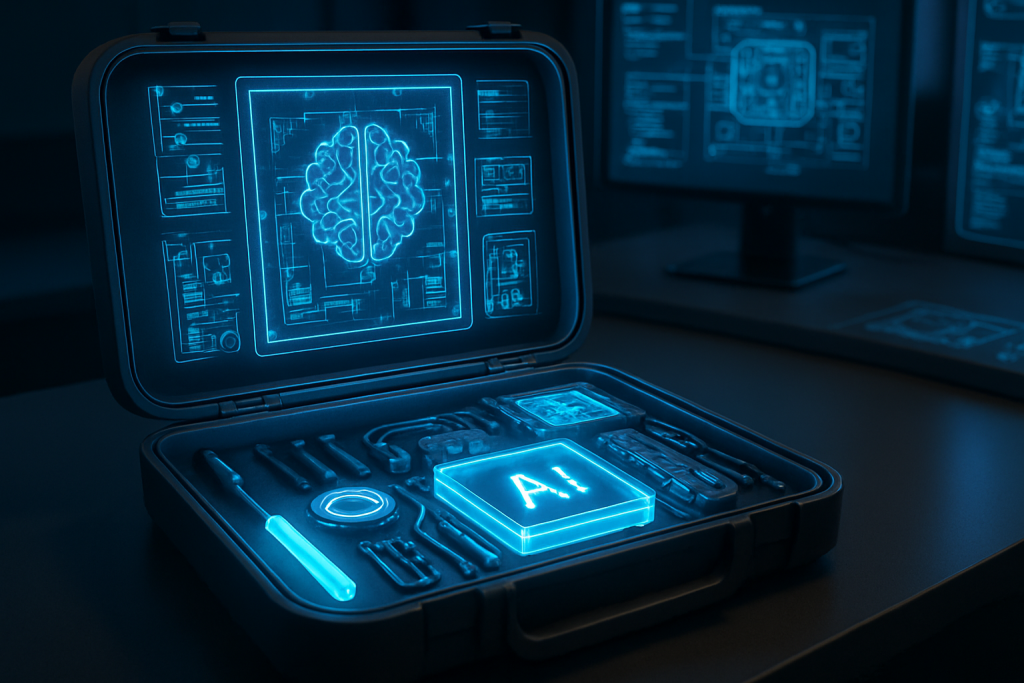Remember those clunky, awkward chatbots of yesteryear, the ones that felt like talking to a particularly dense brick wall? Well, kiss those frustrations goodbye. OpenAI just dropped AgentKit, and the AI agent landscape is about to get a serious makeover. Think of it as giving every developer the keys to their own Jarvis, without needing Tony Stark’s budget (or ego).
AgentKit, launched on October 19, 2025, isn’t just another incremental update. It’s a full-blown ecosystem designed to take AI agents from the realm of research papers and half-baked demos to fully functional, production-ready powerhouses. This isn’t about showing off what AI can do; it’s about empowering developers to make AI actually do something useful, and at scale.
But to truly understand the significance of AgentKit, we need to rewind a bit. For years, the promise of AI agents- autonomous systems capable of handling complex tasks without constant human supervision- has dangled tantalizingly before us. We’ve seen glimpses of it in self-driving cars (though maybe not the flying kind we were promised by “The Jetsons”), personalized recommendation systems, and even the surprisingly helpful AI assistants that now populate our smartphones. However, getting these agents out of the lab and into the real world has been, to put it mildly, a monumental headache. Scalability? Integration? Evaluation? These were the dragons guarding the treasure of true AI agent utility.
AgentKit is OpenAI’s attempt to slay those dragons. It’s a comprehensive toolkit, a Swiss Army knife for AI agent development, offering everything a developer needs to build, deploy, and evaluate AI agents. Think of it as the difference between building a house from scratch, sourcing every brick and nail individually, versus buying a pre-fabricated home kit with everything included. AgentKit is that home kit, but for AI.
So, what’s inside this magical box of AI goodies? Let’s break it down:
Agent Builder: The No-Code Agent Architect
Forget wrestling with mountains of code. Agent Builder provides a visual interface for designing and configuring AI agents. Imagine designing a custom character in a video game, but instead of tweaking their appearance, you’re defining their behavior, goals, and decision-making processes. This dramatically lowers the barrier to entry, allowing developers with less coding experience to jump in and start building.
ChatKit: Seamless Agent-Human Interaction
Remember the awkwardness of early chatbots? ChatKit aims to consign those memories to the digital dustbin. It’s an embeddable chat user interface that makes interacting with AI agents feel natural and intuitive. It’s like the difference between using a clunky command-line interface and having a smooth, conversational interface. Think Samantha from “Her”, but available as a service.
Evals: The AI Agent Performance Review
Building an AI agent is one thing; knowing if it’s actually any good is another. Evals provides a robust evaluation framework, allowing developers to rigorously assess the performance and reliability of their creations. It’s like putting your AI agent through a series of simulations and tests, ensuring it’s up to the task before unleashing it on the world. No one wants another Tay incident, right?
Connectors/MCP (Multi-Channel Pipeline): The Agent Integration Hub
An AI agent is only useful if it can connect to the systems and platforms where it’s needed. Connectors/MCP provides the tools for seamless integration across various platforms and services. It’s like having a universal adapter that allows your AI agent to plug into any outlet, regardless of the voltage or socket type. This ensures versatility and broad applicability, making AgentKit a truly versatile solution.
The implications of AgentKit are far-reaching. First and foremost, it’s going to accelerate the development of AI-driven products and services. Developers can now build and deploy AI agents more efficiently, reducing time-to-market and freeing up resources to focus on innovation. We’re talking about potentially seeing AI agents integrated into everything from customer service and healthcare to education and entertainment, much faster than previously anticipated.
Furthermore, AgentKit promotes standardization in AI agent development. By providing standardized components and evaluation metrics, OpenAI is fostering consistency and reliability. This is crucial for building trust in AI and ensuring that AI agents are developed responsibly and ethically. It’s like moving from the Wild West of AI development to a more regulated and predictable environment.
Perhaps most importantly, AgentKit has the potential to democratize AI development. By simplifying the process, it may encourage a wider range of organizations, including those with limited AI expertise, to integrate AI agents into their operations. This could lead to a surge of innovation from unexpected corners, as smaller companies and startups gain access to the tools they need to compete with the AI giants.
Of course, the release of AgentKit also raises some important questions. Will it lead to the proliferation of AI agents that are poorly designed or used for malicious purposes? Will it exacerbate existing biases in AI systems? These are concerns that need to be addressed proactively, through careful regulation and ethical considerations. Remember Skynet? We need to ensure that AI remains a tool for good, not a weapon of mass disruption.
From a financial perspective, AgentKit is likely to have a significant impact on the AI market. It could fuel the growth of AI-related industries, creating new jobs and opportunities. It could also lead to the disruption of existing industries, as AI agents automate tasks and processes that were previously performed by humans. The economic implications are complex and multifaceted, and it will be fascinating to see how they unfold in the coming years.
Ultimately, OpenAI’s AgentKit represents a significant step forward in the evolution of AI. It’s a powerful tool that has the potential to transform the way we live and work. But like any powerful tool, it must be used responsibly and ethically. The future of AI is in our hands, and it’s up to us to shape it in a way that benefits all of humanity.
Discover more from Just Buzz
Subscribe to get the latest posts sent to your email.


